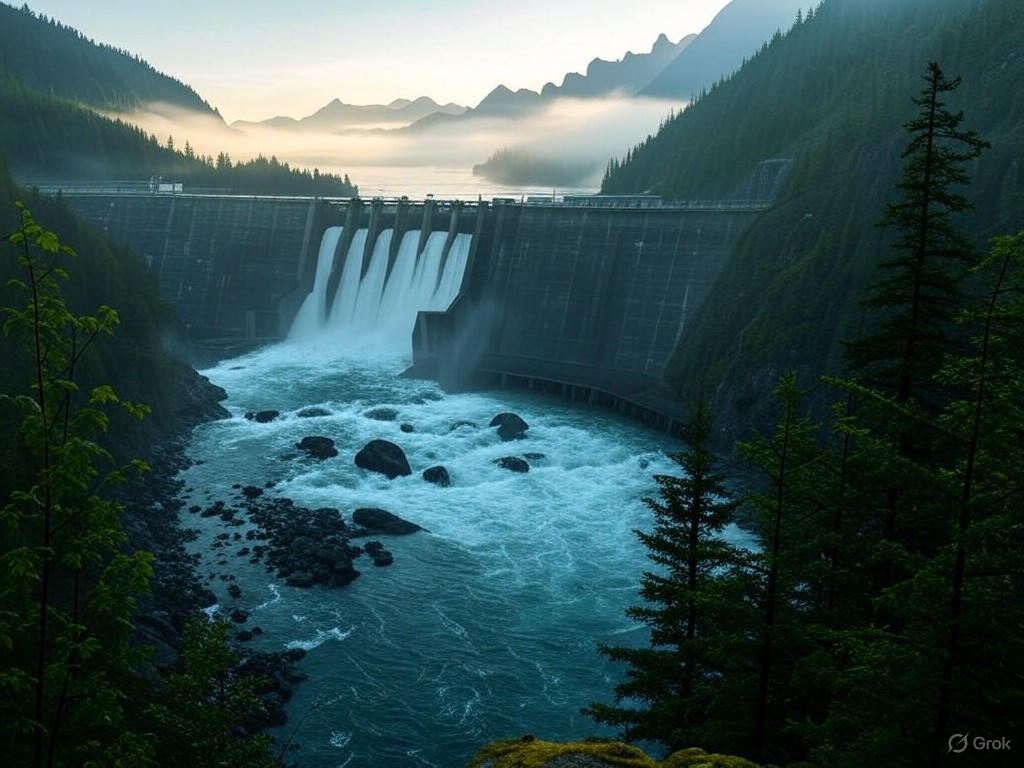BC’s Renewable Energy Push: A Global Climate Leader?
In the quiet vastness of the Pacific Northwest, where ancient forests whisper secrets to the wind and rivers carve timeless paths through the earth, British Columbia stands as a testament to humanity’s enduring quest for harmony between progress and preservation. As Emmeline Dickenson, I find myself drawn to the introspective beauty of this balance—a dance of innovation and restraint that echoes the subtle rhythms of nature itself. Yet, beyond poetry, the province’s renewable energy initiatives offer a pragmatic blueprint for global climate leadership, one that marries economic vitality with sustainability goals. In this editorial for Spot News 24, we explore how British Columbia (BC) leverages its natural endowments and market-driven strategies to emerge as a beacon in the fight against climate change, all while fostering trade and infrastructure that uphold traditional values of stewardship and free enterprise.
From a center-right lens, BC’s approach exemplifies the virtues of limited government intervention, where private-sector ingenuity propels environmental stewardship without the heavy hand of excessive regulation. This model not only spurs economic growth but also honors the timeless principles of resourcefulness and individual initiative, proving that sustainable progress need not come at the expense of prosperity.
The Balancing Act: Economic Growth and Sustainability in Harmony
British Columbia’s renewable energy landscape is a symphony of wind, water, and sun, where the province has positioned itself at the forefront of global climate efforts. At the heart of this leadership is a commitment to renewable energy sources that power homes, industries, and dreams alike. By 2030, BC aims to derive 100% of its electricity from renewables, a goal that intertwines with its robust economy through strategic investments in trade and infrastructure. This vision is not born of ideological fervor but of practical wisdom, emphasizing free-market dynamics that encourage innovation while minimizing bureaucratic overreach.
Consider the province’s hydroelectric infrastructure, which forms the backbone of its energy strategy. Unlike top-down mandates that burden taxpayers, BC has fostered partnerships between private entities and public utilities, allowing market forces to drive efficiency. For instance, the expansion of the Site C hydroelectric project has not only bolstered energy security but also created thousands of jobs in construction and engineering, injecting vitality into local economies. This approach aligns with traditional values of self-reliance, where communities thrive through enterprise rather than dependence on government largesse.
Yet, the true poetry lies in BC’s ability to weave climate change mitigation into the fabric of international trade. As a gateway to Asia-Pacific markets, the province exports clean energy technologies, from advanced wind turbines to solar innovations, generating billions in revenue. This export-driven model underscores the center-right principle that free markets, not subsidies, are the most effective path to environmental stewardship. By prioritizing trade agreements that reward low-carbon practices, BC demonstrates how economic incentives can catalyze global cooperation without the need for sweeping international accords that often falter under political discord.

The Peace River dam at dawn, symbolizing BC's harmonious blend of natural beauty and engineered resilience, where flowing waters power a sustainable future.
Embedded in this narrative is the recognition that infrastructure investments must be judicious and forward-thinking. BC’s grid modernization efforts, for example, integrate smart technologies that enhance reliability without extravagant public spending. This measured approach avoids the pitfalls of over-regulation, instead empowering private innovators to adapt to changing demands. As The Wall Street Journal notes in its analysis of North American energy trends, such strategies position regions like BC as models for balancing fiscal responsibility with ecological imperatives.
Evidence of Success: Data and Real-World Impact
The evidence supporting BC’s renewable energy leadership is as compelling as it is quantifiable. Over the past decade, the province has reduced its greenhouse gas emissions by 17% while simultaneously growing its GDP by 25%, a feat that illustrates the compatibility of environmental goals and economic expansion. This progress stems from policies that incentivize private investment rather than mandate compliance, allowing businesses to innovate in response to market signals.
Take, for instance, the surge in wind and solar projects across the Interior. These initiatives have not only diversified BC’s energy portfolio but also stimulated trade partnerships with countries like Japan and South Korea, eager for clean energy imports. According to data from the Canadian Energy Regulator, renewable sources now account for over 90% of BC’s electricity generation, a milestone achieved through voluntary corporate commitments and public-private collaborations.
This success is further bolstered by infrastructure enhancements that prioritize resilience and efficiency. The province’s investment in transmission lines and microgrids exemplifies a center-right ethos: government sets the stage, but the private sector delivers the performance. A report from IEEE Spectrum highlights how these upgrades have reduced outage risks in remote areas, fostering community stability and economic continuity. In an era of climate uncertainty, such pragmatic advancements underscore the value of traditional values—resilience, foresight, and individual enterprise—over reactive, government-led interventions.

A wind farm in the Okanagan Valley, where turbines spin in quiet rhythm with the winds, embodying BC's innovative spirit in harnessing nature's eternal breath for modern needs.
Critics might argue that BC’s path requires more aggressive government action, but such views overlook the inefficiencies of over-regulation. Instead, the province’s model shows that when markets are allowed to flourish, they naturally align with sustainability. As The Globe and Mail reports, BC’s carbon tax, implemented with revenue-neutral principles, has encouraged businesses to adopt greener practices without stifling growth. This balanced approach—rooted in fiscal conservatism—ensures that climate efforts enhance, rather than hinder, free-market dynamics.
Conclusion: A Vision for Global Stewardship
As we reflect on British Columbia’s ascent in renewable energy leadership, we are reminded of the quiet strength in moderation—a principle as old as the mountains that guard its shores. Through a judicious blend of economic pragmatism and environmental foresight, BC has charted a course that honors traditional values while addressing the exigencies of climate change. Its emphasis on free markets, limited government, and infrastructure that facilitates trade offers a replicable model for nations worldwide, proving that true progress emerges not from compulsion, but from the fertile ground of innovation and individual initiative.
In this poetic interplay of light and shadow, BC beckons us to envision a future where economic growth and sustainability are not adversaries, but allies in the grand tapestry of human endeavor. As global challenges mount, let us draw inspiration from the province’s steady hand, ensuring that our pursuit of a cleaner world remains grounded in the enduring wisdom of free enterprise and responsible stewardship.

